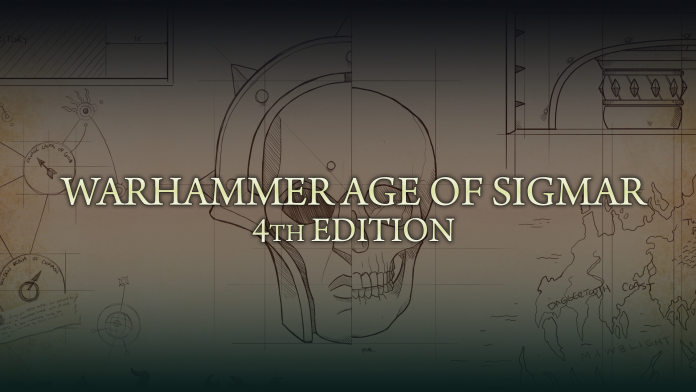It’s been a long time coming but we’re finally here with Goonhammer’s review of Age of Sigmar’s 4th edition Narrative Play mode, Path to Glory.
What’s Changed?
For those of you familiar with the prior Path to Glory campaign system in third edition well, throw all of that knowledge out. While that system was based on older, classic territory-based campaign systems from Warhammer Fantasy Battles, this new version of Path to Glory has a lot more in common with Warhammer 40,000’s Crusade mode. So the short answer is “everything,” but as we cover the rules here we’ll talk about why that’s a good thing and this Path to Glory is worth your time.
Building Your Roster
Building a Path to Glory Roster will be familiar to anyone who’s built a Crusade army, though there’s a much bigger focus on your army’s Warlord and their ascension to heroic glory. Building a Path to Glory roster starts with picking a Faction and a HERO from that faction to be your warlord. This warlord can’t be UNIQUE, they have to be 300 points or less unless you’re running Sons of Behemat, and they have to be a single model.
Your Warlord is the blazing star your army revolves around, and when you select one you also get 5 renown points (more on those later) and choose a path for them to follow as your army sets out on its campaign to conquer the mortal realms. There are four progression paths for Heroes in the Core Rulebook to choose from: the path of the Warrior, Leader, Mage (wizards only), and Devout (priests only). We’ll talk more about these paths later, but they essentially determine the upgrades your Hero gets as they level up during the campaign, each with eight potential options to choose from.
Once you have your hero picked out it’s time to build an Order of Battle. This is basically the list of all of the units you can field in your Path to Glory army, and during the campaign you’ll pull units from this Order of Battle to build your army for games. So at any given time your Order of Battle represents the maximum pool of units your Warlord has access to, and you can add or retire units from this list by spending glory points.
At the start of a standard Path to Glory campaign, players start with 1,000 points for their Order of Battle.
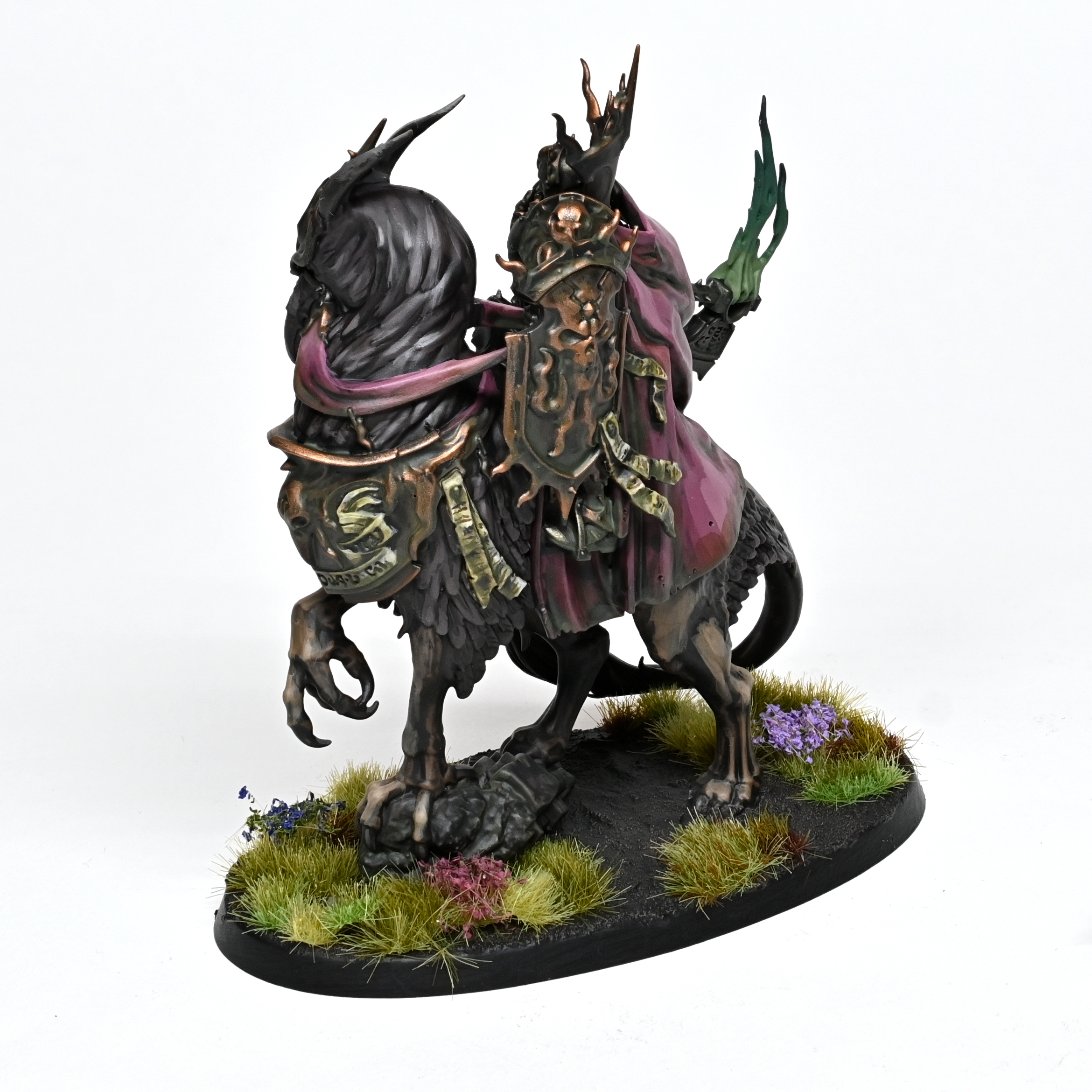
Enhancements
When you build your Order of Battle you can pick one enhancement from each table in your army’s faction rules and give it to an eligible unit in your Order of Battle. You’ll be able to earn more enhancements over the course of the campaign, but you can’t have more than one of any given enhancement. That said, there’s no limit to the number of enhancements you can take in your army in Path to Glory games, and all the units in your army can use any of the enhancements they have. This means that late into campaigns players will be fielding armies with piles of enhancements.
Adding Lores to Your Roster
One change you might have seen coming with Path to Glory is that you don’t pick spell, prayer, and manifestation lores before each game; instead you build your own lores. The first time you add a Wizard to your Order of Battle you pick 1 spell from a spell lore and one spell form a manifestation lore their faction gives them access to, and you add those to your Order of Battle. Likewise, the first time you add a Priest, you add one prayer and one prayer from a manifestation lore. These are your starting spells and lores.
Over the course of your Path to Glory campaign, you’ll get a chance to add new spells and prayers to your lores, and you can have up to 6 spells/prayers in each lore you have. If you would have seven, you can opt to remove one before adding the new spell/lore.
Norman: This rules incredibly hard. This is the sort of personalization that will make your roster look completely different than someone else working with the same faction. It’s also something that isn’t a unit that will grow over time which helps you feel like you’re managing an army, not just individual character sheets. That said, it stinks that factions without wizards or priests will miss out on this completely and in the index era we’re in, there probably aren’t even six spells to get. I assume this will get remedied with battletomes and supplement books but its kind of just scaffolding for now.
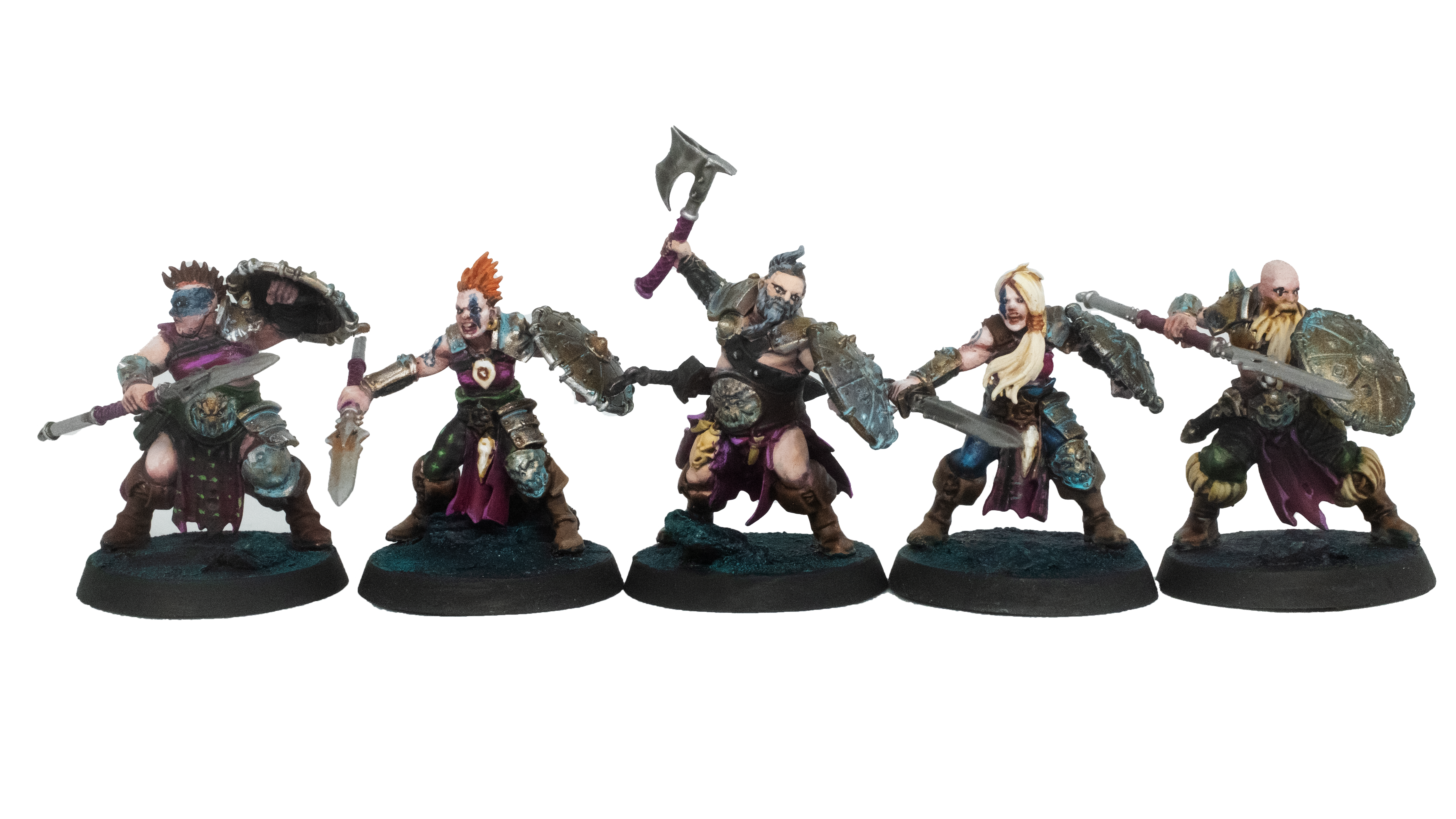
Quests
The final part of building a roster in Path to Glory is picking a quest for them to embark on. This represents your warlord’s ultimate goal, and as you go through a campaign you complete quests to earn rewards. Usually completing these requires playing a bunch of battles, and there are six to choose from:
- Search for the Artefact – This quest has you potentially score clue points if you have a friendly HERO outside friendly territory at the end of your turn. Score 3+ quest points and you complete the quest and gain an artefact of power for a hero on your roster.
- Learn Ancient Scriptures – Score quest points when your priests get 4+ ritual points. Get 5+ quest points and you can get a new prayer to add to your army’s custom lore
- Master Magical Lore – A similar quest, score quest points when you cast on an 8+ with a Wizard. Cash in 3+ quest points to finish the quest and get a new spell for your army’s custom lore.
- Harness Manifestation – The manifestation version. When you pick this quest you add a manifestation spell/prayer to your manifestation lore and mark it “wild.” Each time you cast it while it’s wild you can take damage or gain quest points. Cash in 10 quest points to finish the quest and lose the “wild” tag.
- Seek Glory in Battle – Pick a unit in your army to be Glory Seekers. WIn a battle with that unit in your army and surviving to battle’s end and they score an extra D3+3 renown points.
- Rise of a Champion – Pick a Hero in your Order of Battle without a heroic trait to be a Rising Champion. Slay an enemy hero or monster with your Rising Champion and you can complete the quest, giving them a heroic trait.
These are fun ways to give your army small goals, similar to what we often saw for Crusade armies in different 40k Codexes. They’re a clear mechanic that battletomes can point to when it comes to creating new content for armies. They also help create a natural progression for armies in a campaign and notably only one requires even winning a game, meaning players aren’t likely to get stuck falling behind if they don’t win a bunch of games. And if you aren’t really digging your quest, you can abandon it after any game and just pick a new one.
Norman: For those familiar with 40k crusade, I like this way more than agendas. It adds that pinch of flavor but that feeling persists across games instead of just being one offs.
Rob: True, and the battleplans offer their own little opportunities for extra renown points which do the job better.

Playing Games
When you fight battles in Path to Glory, you build a roster using units, Enhancements, and lores from your order of battle. If your warlord is in your army, they have to be your general for the battle. From there you pick a mission – there are six Path to Glory-specific Battleplans. Games in Path to Glory use variable battle length (games continue for a fifth, sixth, and seventh battle round on a D6 roll of a 3+, rolled at the end of the fourth and subsequent rounds). Note that this is a rule for the mode, not the battleplans – but it’s something you can houserule out if it doesn’t suit you. Each battleplan for Path to Glory also has a Twist table, which has a set of twists that the Underdog can roll for at the start of each battle round.
At the end of the battle if a player wins by 5+ they score a major victory, otherwise a 1-4 point lead is a minor victory. Players can opt to withdraw from the battle at the start of their Hero phase, giving their opponent a major victory but letting you pull any surviving units off the table without those units counting as being destroyed. Their opponent can still go through the motions of the rest of the game if there’s something they need to achieve after the withdrawal.
Replacement Units
There’s a good note about replacement and summoned units in the rules – these units don’t get any veteran units or upgrades their original unit has, and aren’t added to your Order of Battle after the game.
After the Game
The primary gameplay loop for Path to Glory is “Play games -> gain renown and glory points -> improve your roster -> repeat.” A lot of Path to Glory is spent doing bookkeeping between games, as players upgrade their units and rosters, add new lores and enhancements, and increase the size of their order of battle.
Glory Points
Glory Points are the fundamental currency of Path to Glory, used to add new units to your Order of Battle, reinforce units, or retire them. You earn Glory points after each battle, and how many you earn is based on the size of the battle. Basically, the higher the points limit for the battle, the more points you’ll score, and you’ll get bonus points for winning (major/minor), and keeping your general alive. Early on you’ll be looking at around 30-55 glory per battle, and that’ll increase to something like 220 max when you’re fighting bigger battles. Most of the points you earn are for just playing a battle, and win bonuses scale much more slowly.
Adding or Reinforcing a unit costs a number of glory points equal to the unit’s points value on its profile, and when you add a unit it’s added at minimum size. You can only add one unit after each battle, and only reinforce one unit after each battle. Retiring units and taking them off your Order of Battle is free.
This creates a very interesting dynamic for campaign scaling, where if you start at the recommended 1000 point order of battle size and game size, it’ll take most players somewhere around 10-12 games to get enough glory points to get to the 1,500 point roster size for games, and more like 20 to hit 2,000 points, depending on how they’re spending points and how often they win games. That’s a pretty gradual curve, and I can see players opting to start with 1,500 point Orders of Battle and play 1,000 point games early on rather than try and field everything they’re bringing.
Norman: While I like the simplification of just buying dudes for your roster, I think the curve is a bit too gradual. Most of the time in these kinds of formats (crusade) I’ve found people just want to get to 2k as soon as possible and start throwing their collections on the table. That said this is fantastic for groups that are just starting out and want to build and paint their collections as the campaign progresses. I’ll echo what Rob said and recommend house ruling based on your group’s situation.
Renown Points
Renown points are the upgrade currency of Path to Glory, and they’re functionally the same as XP. As you complete games, your units gain Renown points – you get D3 points if you survive a battle, or 1 if you were destroyed. At the end of the battle you can pick one non-Warlord unit to be your Favoured warriors, and they get D6 points. Your units can also gain bonus Renown points, typically by doing stuff in the battleplan. Unique units don’t gain renown points.
As you gain renown points your units’ ranks will increase – at 5-14 they become Aspiring Rank, Elite at 15-29, Mighty at 30-44, and Legendary at 45+.
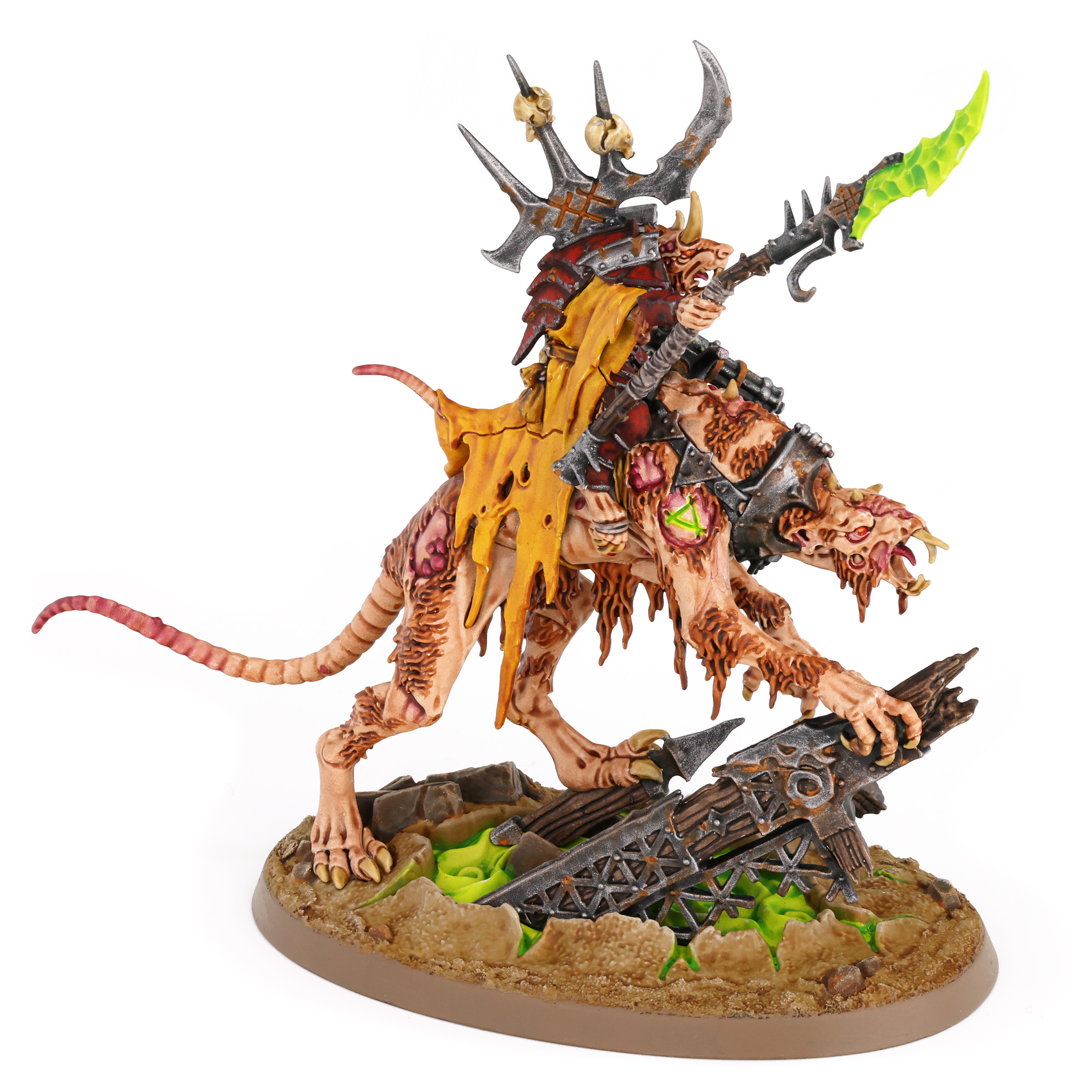
Upgrade Paths
There are six upgrade paths in the Path to Glory core rules; four for Hero units and two for other units. When a unit gains 5 renown points and attains the Aspiring Rank you choose a path for it, then choose your first upgrade on that Path. From then on, that path is their jam, and you’ll get future rewards from the same path.
Rewards in this case all come in the form of abilities, just like everything else in the game. These can be active or passive, though the majority are passive upgrades.
Path of the Attacker
Path of the attacker is for the kinds of units who like to charge into battle and kill things in melee. Effects here include things like getting +1 to hit rolls in the combat phase or being able to Run and Charge at the first level, or getting +1 melee attack or +1 rend at the Legendary Rank. All of these upgrades are pretty good and dropping one or two on a unit will quickly turn them into a terror on the tabletop.
Path of the Defender
Similar to the path of the Attacker, Defender buffs are all about evasion and durability. At the Aspiring level that means ether being able to Heal (1) at the end of any turn or avoiding mortal damage on the retreat, and while those don’t seem as good as Attacker benefits, these quickly ramp up into Ward Saves, Rend reduction, extra control score and Strike-First while you’re on objectives.
Now let’s look at the Hero Paths.
Path of the Warrior
The path with the best name, Path of the Warrior is melee buffs – or melee-adjacent buffs – for Hero units. Starting on this path your Warlord will either get to re-roll charge rolls or Heal D6 once per game in the combat phase, but at higher levels he can gain better saves and rend and at Legendary you can score your choice of Ward (4+) or Strike-First.
Path of the Devout
For the priests in your army, there’s the Path of the Devout. At first level you can choose between Ward (6+) or starting battles with D3 ritual points. At higher levels you can buff nearby units, improve your chants, and heal or damage nearby units as you chant.
Path of the Mage
For the Wizards in your army, there’s the Path of the Mage. These are all related to wizard abilities, and at first level you’ll pick between +1 to casting rolls or gaining Ward (5+) each time you make a cast roll of 10+. At higher levels you’ll gain new spells like Mystic Shield, Arcane Conduit, Eldritch Cataclysm, or Sunder the Earth, which have some pretty solid effects.
Path of the Leader
The real clout-chasers in your army can take on the Path of the Leader, which gives you a grab bag of abilities, some of which are more about being force multipliers. At first level you can choose between a once per battle Redeploy command on a nearby friendly unit or the ability to Heal (1) every turn. At higher levels you can gain extra command points, add 1 to rally rolls on nearby units, and improve control scores for nearby units.
Norman: Something I really like here is these aren’t tables and aren’t designed as such. In 40k crusade if you’re rolling on the table there’s always the chance you get worthless or weak traits, and if you’re selecting off the table it’s too easy to create some broken combos. Here, since you’re only picking and the upgrades are pretty straight forward, it should make for a much smoother experience.
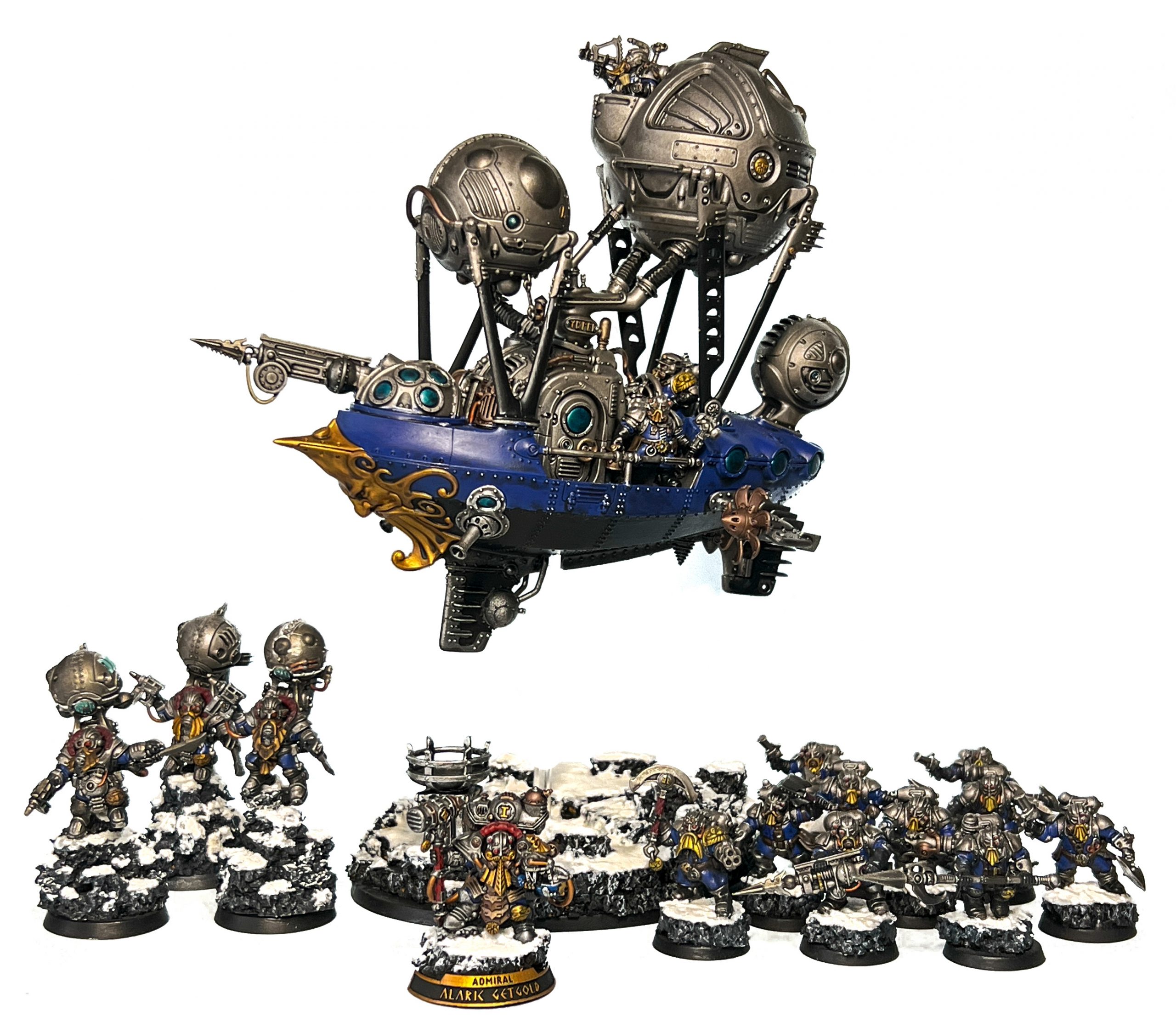
The Battleplans
There are six battleplans to choose from in Path to Glory, and they may be the mode’s weakest part, in part because of that “variable game length” rider. These are, on the whole, more narrative missions, with more asymmetric setups, and I think they’re conceptually pretty solid.
- The Ambush sees one player acting as ambusher and the other attempting to escape to safety, in a mission archetype that’s usually more interesting in concept than execution.
- The Ruined Settlement is pretty straightforward, and sees players fighting over five objective markers with an interesting asymmetrical deployment map.
- The Ritual has one of the cooler set-ups among these missions – one player acts as the ritualist, attempting to complete a powerful ritual while the opponent attempts to stop them, and the ritualist gets to choose the nature of the ritual and the ongoing benefit they’ll get from completing it during the game. These are effects like healing, doing damage, striking first, or getting a bonus to wound rolls each time you score a victory point.
- Relics of Myth is a straightforward symmetric mission fighting over three objective markers.
- The Decisive Battle has one player take the role of raider and the other taking the roll of defender in a corners deployment battle where players score for holding territory and killing enemy units.
- Wreck and Ruin similarly has a raider and a defender, and in this one the defender has to hold five objective markers while placing a large portion of their army into reserves and using the Raise the Alarm action to bring reserve units onto the table.
I really like these battleplans, and I think they’d mix well into a campaign that made good use of other battleplans – they have some great concepts but if these were all you were playing they’d get pretty old pretty fast, and so I’d recommend players look at mixing in battleplans from the GHB.
Final Thoughts
This is a pretty solid foundation for running escalation campaigns in Age of Sigmar, and it’s much, much better than the third edition Path to Glory, dropping the weird legacy focus on territory in favor of building an army of elite warriors and custom heroes. The spellbook and lore rules are interesting and fun, and it’s clear we haven’t seen all the mode has to offer yet – Games Workshop has promised that we’ll see an Anvil of Apotheosis ruleset for building custom heroes at some point as well, and that’s bound to lead to some interesting and bonkers creations, the likes of which I’m here for. There’s a ton of ways that future battletomes can build on these rules, and if you wanted to add terrain and map control back into this I think there are some interesting ways to incorporate that.
Rob: As a primarily 40k player I think this system takes the best aspects of Crusade, improves them, and adapts them for Age of Sigmar. There’s a lot here I think just works plain better than 40k, and I could see myself running a Path to Glory campaign in a way that I never would have considered back in third edition.
Norman: Totally agreed, there’s a lot to like here. I think we’ll be seeing a lot of stores doing Path to Glory campaigns as an intro to the edition and as a way for people to gradually grow their armies. If I have any complaints its that I really don’t like the variable game times but that’s something you can just house rule.
Have any questions or feedback? Drop us a note in the comments below or email us at contact@goonhammer.com. Want articles like this linked in your inbox every Monday morning? Sign up for our newsletter. And don’t forget that you can support us on Patreon for backer rewards like early video content, Administratum access, an ad-free experience on our website and more.
